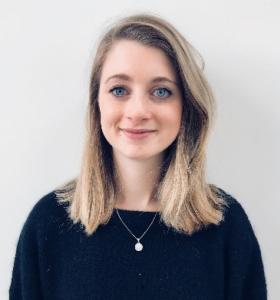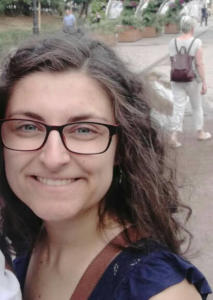Oral Microbiology and Immunology Group symposium: presentation prize winners
Posted on September 18, 2019 by Microbiology Society
This year, the Microbiology Society’s journals will be sponsoring oral and poster prizes at conferences and meetings around the world. We will be getting to know a little more about the winners and their research.
The Oral Microbiology and Immunology Group (OMIG) prize symposium allows PhD, MSc, and other early career researchers to present their work in a friendly, stimulating environment. We spoke to Hannah Serrage (@HSerrage), winner of the Journal of Medical Microbiology prize for best oral presentation, and Maria Muchova (@MuchovaMaria), winner of the Journal of Medical Microbiology prize for best 5-minute presentation.
Hannah Serrage

What was the title of your winning talk?
Photobiomodulation of oral fibroblasts stimulated with periodontal pathogens.
Who or what inspired you to become a scientist?
I think my interest in becoming a scientist was cemented when I worked in an Oral Biology Laboratory during my Undergraduate degree. I was amazed by all the individuals working on such incredible projects and the problem-solving nature of science.
What are you currently working on and what area of your research excites you the most?
I am currently exploring the use of Photobiomodulation (or application of light) in the management of oral disease. I think my research is particularly interesting as we have shown that something as simple as light could be used to manage inflammation induced by bacterial stimuli.
How would you explain your talk to a child under 10?
I am shining blue light on your gums to help keep them healthy!
What would you be doing in your career if you weren’t a scientist?
I really don’t know! I honestly can’t imagine doing anything else! Even as a young child, I would always choose the option to pursue the scientist career in the Game of Life board game.
Maria Muchova

What was the title of your winning talk?
Cyclic di-nucleotides – what is their role in biofilm formation and pathogenicity of Fusobacterium nucleatum?
Who or what inspired you to become a scientist?
It was my high school biology teacher Mr Goebels, who sparked my interest in biology and later on microbiology. His lessons were always very engaging, and he motivated me to read beyond the material studied. That was when I fell in love with science.
What are you currently working on and what area of your research excites you the most?
At the moment, my research focuses on dental plaque biofilms associated with gum disease - gingivitis and periodontitis. We are interested in a specific member of these biofilms – Fusobacterium nucleatum. What fascinates me most is that F. nucleatum acts like a bridging organism between the harmless and pathogenic tooth colonisers.
How would you explain your talk to a child under 10?
Our teeth are naturally covered with a thin layer of plaque, a slimy substance made up of various germs sending each other messages. Too much plaque can cause gum disease. We are trying to block the messages and see whether it can prevent and treat the gum disease.
What would you be doing in your career if you weren’t a scientist?
I would definitely pursue a career as a professional pianist. I played the piano for 9 years, but I stopped eventually because school and focusing on science was taking up most of my time. However, I still occasionally play in my free time to “recharge my batteries”.
Stay tuned for more prize winners!

